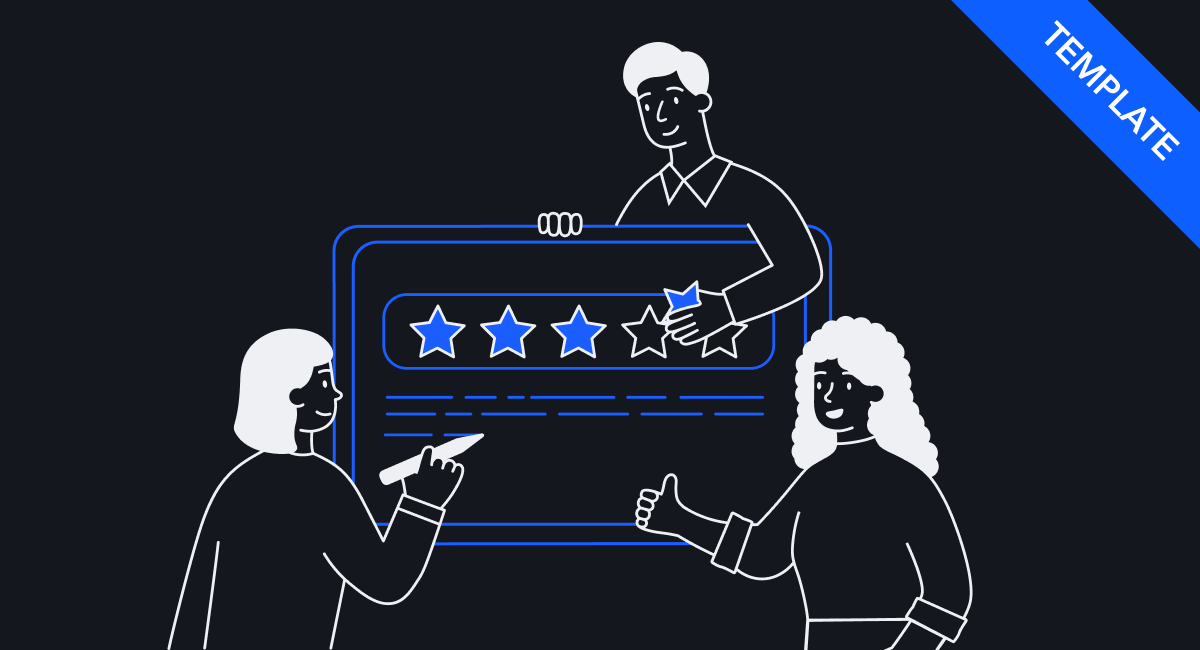
How to Run a Quarterly Business Review (QBR)
“So. Many. Wins. Win here, win there, wins everywhere!”
Lots of quarterly business reviews start this way, with slides on all the ways your company has provided value to the customer this quarter. It’s a tempting strategy to take, as ROI is at the forefront of the client’s mind during QBRs. But is self promotion really the best approach?
Customers want to be heard, rather than having the situation explained to them. After all, they're the expert on their experience. We'll show you how to create & follow a QBR agenda that puts your customers first — while still highlighting valuable contributions from your company.

Jump to:
What is a QBR in business?
Let's back up a little. QBR stands for "quarterly business review" — a quarterly meeting with your high-value customers. The goal is to check in with your customers and give them an honest (but ideally positive) review of the quarter. This can include:
- Key wins - based on whatever your software or service does for the customer
- Historical metrics and results
- Strategic planning for the upcoming quarter(s)
- Most importantly: Addressing customer feedback and questions
Different kinds of QBRs
There are a few different types of QBRs, such as:
- Customer Success QBRs
- Sales QBRs
- EBR (executive business review)
This article will focus on the first type, Customer Success QBRs. Typically, CSMs (customer success managers) will hold these meetings with a champion or decision-maker customer.
How to run a successful QBR meeting
1. Create an agenda for your QBR
The first step is to craft a strong agenda. This will ensure you're prepared for the QBR, as well as help you get back on track if your QBR goes in an unexpected direction. The last thing you want is to look unprepared.
When creating your QBR agenda, here are some important things to include:
- Focus on the customer - Make sure your agenda points are focused on the customer and their previously stated goals.
- Don’t include too many topics - Too many agenda items is a mistake. You don’t want the customer to feel overwhelmed with information. Be prepared to answer any questions they may have, but remember that it's okay to say, "I'm not sure, but I'll get back to you."
- Send the agenda to the customer before the meeting - Another common mistake is taking the customer by surprise with your topics. You can avoid this by sharing a copy of the agenda prior to the meeting.
- Stay focused on the agenda topics - Allocate a specific timeframe for each topic and do your best to stick to it.

2. Aim to increase your understanding of the customer
In a customer success QBR, the #1 priority is to make sure the customer feels heard, understood, and supported. If you begin by listing all the ways you helped them, it can be offputting. Even if they don't mind it, your customers may get the sense that you've got all the answers, and thus quickly end the QBR meeting without sharing any insights.
To better understand your customer, you should adopt an attitude of curiosity during the QBR, according to Chad Horenfeldt, Director of Customer Success at Kustomer. He explains that QBRs are most effective when you can use them to understand the customer's desired business outcomes.
Here are some questions you can ask to uncover the customer’s priorities:
- If you had to pick one goal for this quarter, what would it be?
- Have there been any internal strategy changes since the last time we spoke?
- How has our product gotten you closer to achieving your goals?
- What can we do more in the future to get better results?
3. Come prepared with customer metrics
You can also discover customer insights by pulling data. For example, you may notice that the velocity of team members using the software has declined in the last few months. In that case, the CSM can use the QBR to dig into where the team members are finding value in the software. Based on the answer, it may make sense to adjust your metrics for what success looks like.
Other examples of customer data analytics to bring to a QBR:
- Product usage numbers
- Adoption rates across the team, department, or enterprise
- Volume of support tickets or feature requests submitted
Bring it all together with Workona's QBR template
You can begin your research several weeks before the QBR is scheduled. Start thinking about who should be present at the meeting, as well as what supporting docs you want to track down.
Wondering how to organize all of this content? That's where Workona comes in.
- Resources - Any doc, link, or file related to the QBR should be included here. This keeps your work in one place, rather than scattered across the web.
- Notes - Any notes relevant to the QBR can go here, as well as meeting notes.
- Tasks - Have a checklist of tasks? Add them to the workspace so everything gets done ahead of time.